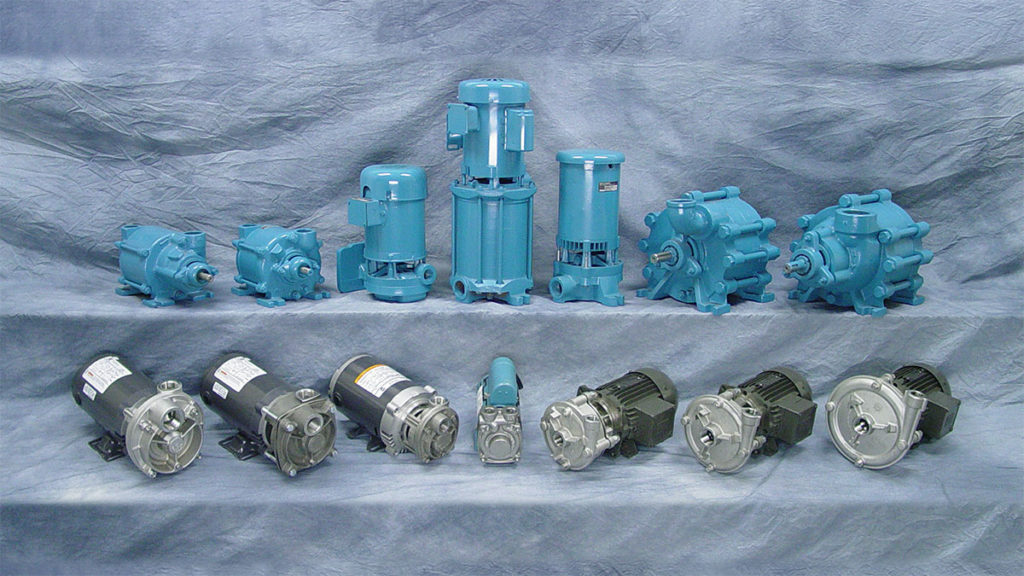Welcome to Week 7 of our series, where we explore the advantages of regenerative turbine pumps in various applications. This week, we focus on a key benefit that sets regenerative turbine pumps apart from other designs: their ability to mitigate or eliminate cavitation effects, especially in low NPSH applications.
What is Cavitation and Why Does it Matter?
Cavitation occurs when the pressure of a fluid drops below its vapor pressure, causing vapor bubbles to form. As the fluid moves through the pump, these bubbles collapse violently, creating shockwaves that can damage pump components over time. Cavitation is not only destructive but also reduces pump efficiency and can lead to frequent maintenance, downtime, and ultimately, shorter pump life.
Common in high-pressure pumps like centrifugal and positive displacement pumps, cavitation is a significant concern in many industries, particularly when dealing with hot fluids or systems where available suction head is limited. The ability to mitigate or eliminate cavitation is crucial in these situations, and regenerative turbine pumps are uniquely designed to address this issue.
How Regenerative Turbine Pumps Mitigate Cavitation
Regenerative turbine pumps are known for their exceptional resistance to cavitation, particularly when operating in conditions with minimal NPSH available. MTH Pumps has specifically designed certain models to handle these low NPSH conditions by incorporating a unique low NPSH inducer impeller into the pump’s suction side.

Inducer Impeller
Here’s how it works:
- First Stage Centrifugal-Style Impeller: MTH’s low NPSH models feature a first-stage centrifugal impeller designed to maintain a constant fluid velocity. This design reduces the entry losses that are typically encountered when fluid enters the pump, allowing the fluid to be smoothly introduced into the impeller without any drastic pressure drop.
- Shaped Inlet Flow Paths: The inlet flow paths are carefully shaped to guide the fluid evenly into the impeller, further reducing entry losses and helping to prevent the formation of vapor bubbles that can lead to cavitation. By maintaining a stable velocity and reducing turbulence at the pump’s suction side, the risk of cavitation is minimized.
- Multi-Vane Diffuser: Working in conjunction with the centrifugal impeller, a multi-vane diffuser is used to balance radial loads and extract the maximum pressure from the first stage. This design not only enhances efficiency but also ensures that the fluid is at a stable pressure when entering the subsequent stages of the pump.
- NPSH Inducer for Enhanced Flow and Pressure: The low NPSH inducer impeller ensures that the pressure and flow produced at the first stage are adequate to feed the succeeding stages. This eliminates the pressure drop that often leads to cavitation in other pump designs. The inducer acts as a pre-stage that boosts suction pressure, ensuring smooth operation without cavitation, even in demanding applications with low available NPSH.
Why Regenerative Turbine Pumps Resist Cavitation Better
One of the main reasons regenerative turbine pumps excel at avoiding cavitation is their unique flow pattern. Instead of relying on a traditional axial or radial flow, regenerative turbine pumps create a helical flow that reintroduces the fluid to the impeller multiple times as it moves through the pump. This continuous re-energization of the fluid minimizes the chance of pressure dropping below vapor pressure, preventing the formation of damaging vapor bubbles.
Additionally, because regenerative turbine pumps handle fluid in smaller, incremental pressure steps as it passes through the pump, they avoid the sudden pressure drops common in centrifugal pumps. This gradual pressurization significantly reduces the conditions that lead to cavitation, allowing for smoother and more reliable operation.

Low NPSH Inducer Impeller on the Suction Side of the Pump
Applications Where Cavitation Resistance Matters
Regenerative turbine pumps are especially beneficial in industries where cavitation is a frequent concern. The ability to operate effectively in low NPSH conditions makes them suitable for applications like:
- Boiler Feed Systems: In steam generation systems, the feedwater is often near its boiling point, making cavitation a constant risk. Regenerative turbine pumps can handle these high-temperature fluids while minimizing cavitation, extending pump life and maintaining efficiency.
- Cooling Towers and Chillers: In HVAC and industrial cooling systems, fluctuating temperatures and low suction head can create the perfect conditions for cavitation. Regenerative turbine pumps can operate effectively in these environments, reducing maintenance costs and downtime.
- Chemical Processing: Many chemical processes involve pumping volatile or high-temperature fluids that are prone to cavitation. Regenerative turbine pumps provide a reliable solution for these applications by maintaining stable flow and pressure even under challenging conditions.
- Water Treatment: In water treatment plants, cavitation can be a common issue, particularly when dealing with low-pressure intake systems. The cavitation-resistant nature of regenerative turbine pumps makes them ideal for ensuring continuous operation in these facilities.
Conclusion
MTH Pumps’ regenerative turbine models with low NPSH inducer impellers are engineered to provide cavitation-free performance, even in the most demanding conditions. By leveraging advanced design elements such as shaped inlet flow paths, multi-vane diffusers, and specialized impeller designs, MTH’s pumps excel at preventing cavitation while maintaining high efficiency and reliability.
With reduced cavitation risk, these pumps not only last longer but also reduce the need for frequent maintenance and costly repairs, offering significant savings over the pump’s lifetime.
Thank you for reading Week 7 of our series. Join us next week for the final part of this series, where we will explore the various configuration and material options available for regenerative turbine pumps.

